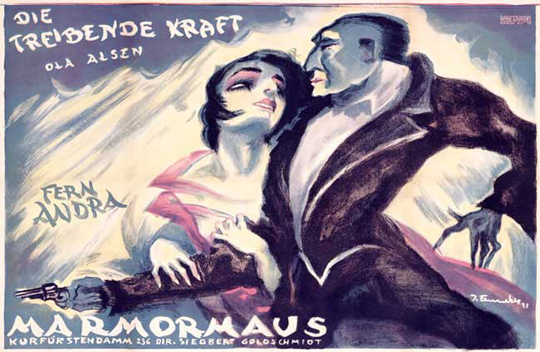 In celebration of ADHT’s recent Graduate Symposium, New Research: Fresh Takes on Design, From Style to Stuff, we will be featuring selected papers written by our graduate students. We are pleased to present
In celebration of ADHT’s recent Graduate Symposium, New Research: Fresh Takes on Design, From Style to Stuff, we will be featuring selected papers written by our graduate students. We are pleased to present
“Weimar Rococo: The Cinema Posters of Josef Fenneker as a Reflection of 1920s Berlin Society”
by Lauren J. Miller
The Weimar Republic was a period of seismic change within Germany, especially in Berlin. New perspectives and freedoms revolutionized urban social mores, gender roles, and the arts. One area that was particularly affected was film, and indeed, the 1920s are often referred to as the golden age of German cinema. An astounding variety of movies was released during this period, and in order to attract audiences within Berlin’s visually crowded and economically fractured urban milieu, individual theaters commissioned graphically-arresting posters that were aesthetically tailored to the distinct demographics of each location. The era’s acknowledged master of the form was Josef Fenneker.
Fenneker’s strikingly original posters often did not reflect the style of the films themselves, but attempted instead to reveal the emotional quality of the movies’ themes and plots. To accomplish this, he employed a remarkable range of artistic genres in his designs, from Expressionism to Cubism to modified Art Deco. However, his use of different techniques was not simply an artist’s desire to exercise his creative impulses, but a concerted intellectual effort, designed specifically to reflect—and engage—the uniquely splintered society that was 1920s Berlin, particularly in the early years of the decade.
Condensed from the author’s Master’s thesis, this article will evaluate Fenneker’s body of work during the Weimar years; explore his oeuvre’s importance and impact in relation to the enormous collective popularity of German cinema at the time; and analyze how he utilized discrete artistic styles to influence and attract Berlin’s diverse societal constituencies.
Read the full article here.


























